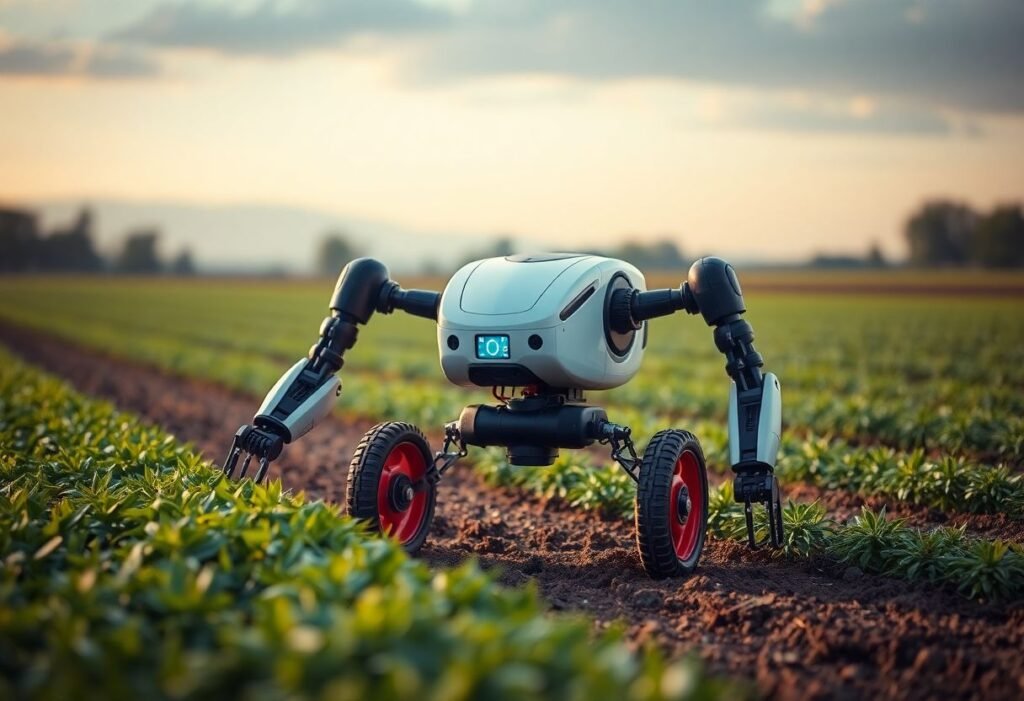The integration of robotics in precision agriculture stands as a critical innovation, streamlining crop management and enhancing yield. This technology enables farmers to optimize their resources, reduce environmental impact, and improve profitability, making the agricultural landscape more sustainable.
The Impact of Robotics on Crop Management
The rise of robotics in precision agriculture has transformed traditional farming methods. Robotic systems equipped with advanced sensors and machine learning algorithms can analyze extensive data about soil conditions and crop health. This data-driven insight allows for precise interventions, such as targeted irrigation and fertilization, which not only conserves resources but also boosts productivity. Experience has shown that using robotics can lead to significant increases in yield while minimizing wastage, catering to the growing global food demand.
Enhancing Soil Health through Robotic Solutions
One of the most exciting applications of robotics in agriculture is soil health management. Robots can be employed to perform soil testing and monitoring with incredible accuracy, thus informing farmers about the nutrient composition of their fields. With careful analysis, farmers can precisely apply nutrients where they are needed most. This results in healthier crops and improved soil sustainability. Additionally, these practices align closely with sustainable agricultural practices and environmental stewardship, crucial in today’s ecosystem-focused market.
Precision Pest Control Using Robotics
Robotic technology has shown remarkable promise in the realm of pest management. Automated systems capable of identifying and targeting pest infestations can not only reduce the reliance on chemical pesticides but also significantly decrease environmental impact. These robots utilize both visual and infrared technologies to detect pests earlier in the growing process, significantly improving intervention timelines. This leads to healthier crops and reduces the economic burden on farmers associated with pest damage.
Data Collection and Analysis in Real-Time
Robots equipped with data-gathering technology facilitate real-time monitoring of crops and field conditions. This constant influx of data can be analyzed to predict potential issues, allowing farmers to make informed decisions quickly. This aspect of big data utilization in agriculture opens up new avenues for enhancing crop management strategies while ensuring that resources are allocated efficiently. With real-time analytics, farmers can increase their adaptability to changing environmental conditions.
Robotic Innovations in Harvesting
Harvesting is a labor-intensive process, but robotics has begun to revolutionize this aspect of farming. Specialized robotic harvesters are designed to handle various crops delicately, minimizing damage and ensuring optimal timing with the harvest process. These innovations not only increase the efficiency of harvesting operations but also allow farmers to allocate manual labor to other critical areas of farming. Moreover, with robotics, the harvest process can continue irrespective of labor shortages, ensuring that crops are harvested at the optimum time.
The Future of Robotics in Sustainable Agriculture
The future of agriculture undoubtedly lies in the hands of robotics and automation. With continuous advancements in technologies such as artificial intelligence, farmers can expect greater control over their farming practices. As innovations evolve, we can anticipate smarter farming solutions that enhance sustainability, lower costs, and yield better results. The role of robotics in precision agriculture is more than just a trend; it is a necessity for meeting future food production demands while safeguarding our environment.
Disclaimer: The content provided is for informational purposes only and should not be considered as professional advice.





















